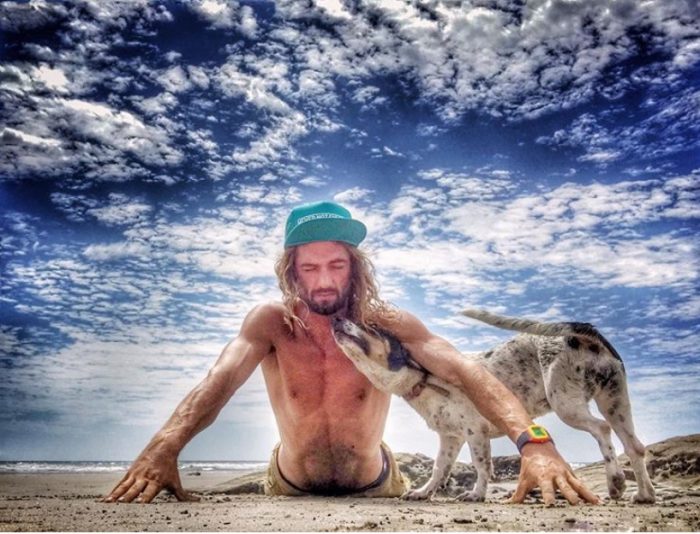Most yoga studios are closed, we are stuck at home, and some of us are missing the teachers who give us guidance.
The pandemic has been a challenge to owners of yoga studios, but what about the students? Many of us relied upon regular classes to maintain our well-being. We are missing our community on many levels.
A solid yoga practice at home might not replace the human interaction around classes, but it is something to start with.
Many of us don’t know what to do on our mat without instruction. Some of us don’t enjoy receiving guidance from a video conference and give up on our practice. Maybe there is a way out that can deepen our experience at the same time?
I have been a yoga teacher for 10 years. During that time, I observed a problematic pattern that is pretty common among folks taking yoga classes. I am talking about the drive to make everything in life a competition.
“Who can do a handstand?” is one of the most asked questions around yoga, but what about other questions like: “Who feels better after class?”
Yoga is a practice that is supposed to help us connect with ourselves. The Sanskrit word yoga is often translated as to unite. But what does that actually mean?
Well, it doesn’t mean competing with others. Instead, it implies that we need to get to know ourselves first. We need to understand our practice and use it like a toolbox. “If I do this, then that happens.”
Our goals in yoga should not be to impress others with breathtaking poses. We are doing this for ourselves. We want to improve our well-being. Most importantly, we all start at different points.
Let’s look at ourselves as if we were an artist. When we learn to create art, ideally, we try all kinds of techniques. Oil, crayons, pencils, and designing graphics digitally are different ways to express ourselves. Once we tried all of them, we can find our own style. The same goes for yoga.
We can take different classes and get to know several styles of yoga, but at the end of the day, it is our practice. It is about what we make of it.
I am just one of many yoga teachers, but I would like to share my approach with you.
After our practice, we should feel better than before. Ideally, we feel as if we have just received a massage, just without the costs of that. We try to move our body, align with our breath, and calm our busy minds.
Thoughts like, “I am not good at this” or “this hurts” should not be part of our experience. Let’s take a step back and connect with ourselves on a deeper level; let’s connect with our body’s own intelligence.
Here is a sequence designed to give us the idea of a slow practice at home that we can integrate into our daily lives:
By moving our body in a gentle way, we invite ourselves to truly feel what is going on in our lives. Are we able to focus on the present moment, or are we distracted by thoughts that have nothing to do with our yoga practice?
Yoga is not only about bending our physical body; it is also a practice designed to improve our ability to focus. Awareness is like a muscle. We need to use it to make it stronger.
I invite you to take this sequence as a starting point to build an independent yoga practice at home. Simply follow these movements for five minutes and ask yourself this question: “Which parts of my being are asking for more attention?”
It could be our hamstrings asking for more stretches, it could be our neck asking for more gentle, rolling motions, and it could be our mind thanking us that we slowed down for a few moments. Our body, mind, and spirit will tell us how we feel—we just need to listen.
This can be much easier at home than in a crowded yoga class. Nobody is going to interrupt us when we choose to do a few movements that felt extraordinarily nice that day. There will be no judgment if we decide to stay in a comfortable pose for a little longer. Our body will tell us what it wants to do.
Establishing a connection with our body that allows us to understand our practice’s effects is taking things to the next level. Our long-term goal could be gaining the ability to stock up our toolbox: “If I do this, then that happens.”
This doesn’t mean that we shouldn’t take any yoga classes or instructions from others. Instead, it invites us to develop a deeper understanding of what we are actually doing when we do yoga.
It helps us unifying our body, mind, and soul. Even more important, it allows us to take things into our own hands and become independent in our practice.
Maybe the pandemic is forcing us to discover this part of our practice—and maybe that is actually a good thing.
I hope you enjoy your practice.
~






Read 16 comments and reply